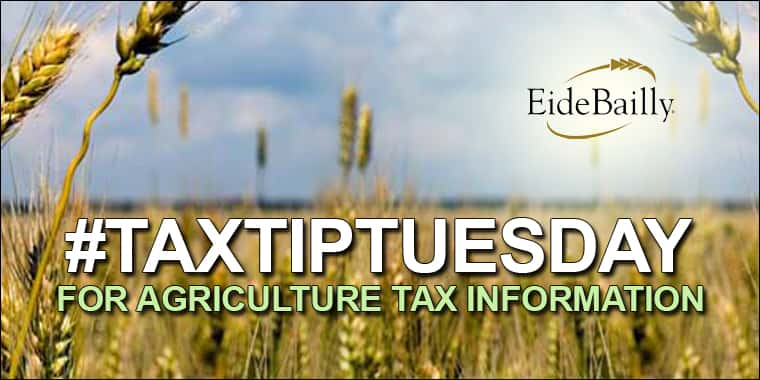Cash basis producers have an opportunity to make contributions of raised commodities directly to a charitable organization. The fair market value of the gifted commodity is excluded from taxable income of the donor, resulting in the potential for significant federal, state and self-employment tax savings.
The following example illustrates the potential tax savings of a charitable gift of a commodity directly to a qualified charity vs. the sale of the same commodity by the producer and a gift of the sales proceeds.
- Sale of commodity for $10,000 and subsequent gift of $10,000 proceeds to a qualified charity:
- The $10,000 of proceeds from the sale of the commodity will be included as taxable income on Schedule F, and subject to income and self-employment taxes.
- Assuming a 25{f75e9bc95454961d27ea60375533d5bd3793c6b31aa68057771d9b5363a8de8e} federal tax rate and 5{f75e9bc95454961d27ea60375533d5bd3793c6b31aa68057771d9b5363a8de8e} state tax rate, total income tax due as a result of this sale would be $3,000.
- Assuming that the producer’s self-employment income is less than the $113,700 social security wage base, self-employment taxes would be $1,530.
- Assuming that the producer is married and has no other itemized deductions, the $10,000 charitable contribution would result in zero tax benefit, as the $12,200 standard deduction for a married couple filing a joint return would exceed the itemized deduction of $10,000.
- Total tax due as a result of the $10,000 commodity sale = $4,530.
- The $10,000 of proceeds from the sale of the commodity will be included as taxable income on Schedule F, and subject to income and self-employment taxes.
- Charitable Gift of a commodity with a value of $10,000 directly to a qualified charity:
- The $10,000 value of the commodity is excluded from taxable income on Schedule F, resulting in zero federal, state or self-employment tax owed on this $10,000 commodity.
- No charitable deduction is allowed, as the tax basis of the commodity contributed is zero.
The example above results in a $4,530 tax savings to the donor, while still providing the charitable organization with a $10,000 benefit.
Note that the tax savings of this illustration may vary, depending upon the marital status of the donor, level of self-employment income of the donor and presence of any additional itemized deductions of the donor.
In order for this strategy to work, and provide the maximum tax benefit, it is very important to be aware of the following guidelines:
- The donor must be a cash basis farmer, who is actively engaged in a farming activity.
- Commodities gifted by an accrual basis farmer will not qualify, as the farmer will have a basis in the commodity.
- Grain gifted by a crop-share landlord does not qualify due to the assignment of income principal.
- The donor must be sure that commodities gifted are not:
- Collateral for a CCC loan.
- Under a loan deficiency payment contract.
- The donor must ensure that the commodity, not cash, is being given to the charitable organization.
- Clear title to the commodity must pass to the charitable organization.
- This can be evidenced by an assembly sheet or warehouse receipt in the name of the charity. When the donor delivers grain to the elevator, the producer must use the charity’s name on the assembly sheet.
- This assembly sheet or warehouse receipt should be delivered to the charitable organization with a letter indicating that the commodity has been donated and that the charity is now the owner of the commodity and may sell at any time.
- The charitable organization must direct the sale of the commodity, as the donor is no longer the owner. In other words, the charity must call the elevator and request the commodity to be sold.
- If the commodity is delivered by a producer to a cooperative, the reporting of the commodity sale will be handled differently. Under normal circumstances, the sale of a commodity by the producer will generate unit retains as reported on the 1099-PATR. Because the commodity is not being sold in the producer’s name, the bushels sold and dollars collected will not be included on the producer’s 1099-PATR. However, it is important for the producer to keep a copy of the assembly sheet with the commodity donated to the charity to be able to prove their yields for FSA and crop insurance purposes. Also, it is important to review your 1099-PATR at the end of the year in which you made the donation to be sure the commodity sale was not included in your taxable total.
Caution: If the above steps are not followed, the IRS may treat this as a grain sale by the farmer, and a subsequent cash contribution to the charitable organization.
Sponsored by Eide Bailly


